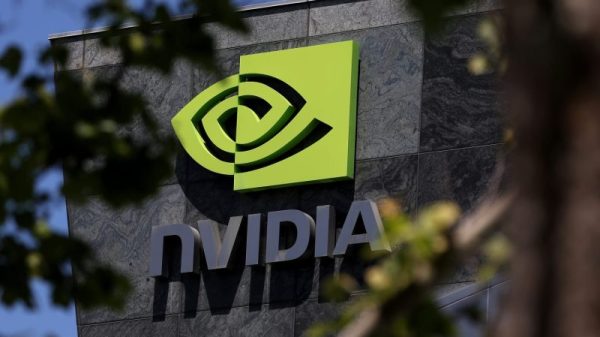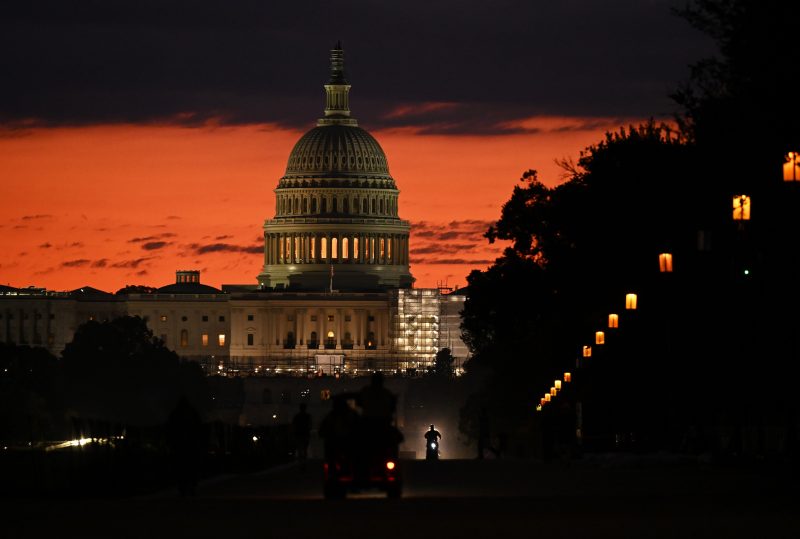Time is running out for Congress to prevent a government shutdown, as Speaker Kevin McCarthy (R-Calif.) tries to defuse the demands of ultraconservatives in the House who are demanding aggressive spending cuts.
When lawmakers return Tuesday, both the House and the Senate will try different tactics to fund the government past the fast-approaching deadline — each looking to jam their preferred legislation through the other chamber in a risky game of brinkmanship. Current spending laws expire on Sept. 30, so the government will shut down at 12:01 a.m. on Oct. 1 without action.
In the House, the GOP majority failed several times last week to reach consensus on a short-term funding bill, known as a continuing resolution. Most of the conference says they want to avert a shutdown, but a small group of far-right members who oppose a short-term extension have blocked that option. So Republicans will try to pass some separate bills that would fund the government for the full fiscal year. The Senate will begin work on its own short-term spending bill on Tuesday, aiming to send it to the House by the weekend with hours to go before a shutdown starts — where it would probably have enough votes to pass, but only with support from Democrats, a red line for many in the GOP.
But while the far-right rebels in McCarthy’s caucus say the rising national debt is such a threat that it’s worth forcing the government to close down in pursuit of spending cuts, the uncomfortable fiscal reality is that most of what is driving federal borrowing to record levels isn’t even up for discussion this week.
Conservatives want to pare federal discretionary spending back to 2022 levels, which would mean cutting more than $100 billion from agency budgets each year.
That’s a lot of money, but hitting the goal would require severe cuts to a small portion of the federal budget — mostly programs that provide services like education, medical research and aid for families in poverty. The government’s biggest annual expense, though, and the main drivers of U.S. debt, are the retirement programs Medicare and Social Security. The United States spends more than $6 trillion every year. McCarthy’s caucus is tying itself in knots over how to make cuts from domestic discretionary spending, which accounts for less than one-sixth of that total.
Looking at it another way, the nonpartisan Congressional Budget Office projects that the annual federal deficit is expected to rise to nearly $3 trillion per year by next decade, up from roughly $2 trillion this year. If the conservatives in the House GOP get everything they’re seeking now, that number could drop to about $2.8 trillion per year.
“The people back in my district, they’re tired of the way this town works,” said Rep. Elijah Crane (R-Ariz.), who joined other conservatives in the last week to stymie McCarthy’s attempts to move spending bills. “They understand there’s no appetite to spend money we don’t have, and they expect me to do whatever I can to stop it, and to change how we do business. It’s not always the most comfortable thing.”
But the disconnect between the political rhetoric about the shutdown and the reality of the budget math underscores how little lawmakers are doing to try to rein in the long-term federal spending imbalance. Without a deal, the federal government will shut down, hurting economic growth and leading to the suspension of a wide range of essential public services.
“It’s a completely symbolic fight that ignores 90 percent of the actual budget,” said Brian Riedl, who served as an aide to former senator Rob Portman (R-Ohio) and is now a policy analyst at the Manhattan Institute, a conservative-leaning think tank. “I think lawmakers would have a lot more credibility if they were taking on the rest of the budget at the same time.”
The fight is over such a small portion of the budget because even Republicans have agreed not to touch the biggest sources of federal spending, including the Social Security and Medicare retirement programs, but also the military, border enforcement and veterans benefits, which Democrats don’t want to cut, either. Republicans have also ruled out higher taxes as part of any deal to lower the deficit. Instead, the GOP has instead demanded cuts to domestic programs funded annually by Congress, known as “discretionary” spending.
As part of a deal to avert a breach of the debt ceiling in June, President Biden and McCarthy agreed to keep this part of the budget essentially flat, which would amount to a cut, accounting for inflation. Many House Republicans, however, now say that deal was a ceiling on spending levels rather than a floor, and they want to cut roughly more than $100 billion next year compared to this year. (The White House is also seeking new emergency spending for natural disasters and the war in Ukraine, while Senate appropriators are also seeking new funding that would circumvent previously imposed congressional spending caps, according to the Committee for a Responsible Federal Budget, a nonpartisan think tank.)
The looming government shutdown: What to know
End of carousel
Further complicating the math is that Republicans are pushing for these cuts while also seeking funding increases for immigration enforcement and veterans benefits. That means their proposed cut would require dramatic cuts for domestic programs. Such a sharp reduction might have a hard time passing the GOP-controlled House; even if it did, the Democratic-controlled Senate would never pass it, and Biden would veto it.
House Republican appropriators had previously proposed $60 billion in cuts to these domestic programs, which would bring spending on those programs to their lowest point as a share of the economy in at least 60 years, according to Bobby Kogan, senior director of federal budget policy at the Center for American Progress, a center-left think tank. But that plan is regarded as insufficient by conservatives, who are pushing for deeper cuts.
Some Republicans have privately bemoaned that many of their hard-right colleagues do not understand the government funding process and only began to make more demands when bills were nearly ready for a floor vote.
“I think more of these folks need to have an [appropriations] 101 when they first get here,” moderate Rep. David Joyce (R-Ohio) said earlier this month. “If you want to control the outcomes, you have to work harder on the appropriations process.”
House Republicans are currently fighting over just one step of many to fund the government. Some sort of compromise with the Democratic-controlled Senate and the White House will be necessary to pass any spending legislation, whether for a short extension or to cover the full fiscal year.
While some hard-right lawmakers have tried to broker deals to fund the government in the short-term — most notably Freedom Caucus Chair Scott Perry (Pa.), Chip Roy (Tex.), and Byron Donalds (Fla.) — many holdouts remain completely opposed to any stopgap bill, angry that the conference did not start voting on the full fiscal year’s spending appropriation bills earlier. At the same time, though, the far-right rebels have also inhibited that process by blocking debate on two such bills in the last several months.
Several of the holdouts never supported McCarthy as speaker, instead ultimately voting present to allow him to win the post. Those members, most notably Rep. Matt Gaetz (Fla.), continue to threaten to try to push a motion to throw McCarthy out of the speakership, greatly irritating a majority of the conference.
“We have been working on these issues for months. … Anyone that says otherwise that this is some sort of a last-minute deal is being disingenuous,” said one House Republican negotiator, who spoke on the condition of anonymity to express their discontent with several colleagues. “Some people just have a personal issue that has nothing to do with safeguarding the fiscal sanity of the country, or anything else.”
Slashing just the parts of the budget the House proposals focus on would do little to rein in the deficit as other costs rise. The government is expected to spend $3 trillion more on Social Security and health-care programs alone over the next decade, or more than double the cost reductions achieved from the GOP plan.
“You could completely zero out this entire pot of funding Republicans are talking about, and you wouldn’t put the government on a sustainable trajectory moving forward,” said Ben Ritz, director of the Public Policy Institute’s Center for Funding America’s future. “It’s clearly not a serious attempt to stabilize the debt.”
Under former House speaker Paul D. Ryan (R-Wis.), the GOP did try to rein in spending on Social Security and Medicare, advancing plans to substantially lower the federal deficit. But those proposals were unpopular with voters and have largely been abandoned by McCarthy under pressure from former president Donald Trump, who saw Social Security and Medicare cuts as political losers. Some conservatives have pushed for the cuts to the smaller domestic programs as a necessary first step to end “woke and weaponized bureaucracy,” which the right can then build on by advancing more aggressive cuts.
And some budget experts also say that while the GOP proposal wouldn’t erase the debt, more than $100 billion in cuts could lead to $1 trillion in reduced spending over a decade.
“It’s not that much, but it’s not nothing, especially over time,” said Marc Goldwein, a budget analyst at the Committee for a Responsible Federal Budget.
As a shutdown seems more and more likely, House leaders are stressing to members that it could cost them politically.
“I just believe if you’re not funding the troops, and you’re not funding the border, it’s pretty difficult to think that you’re going to win in a shutdown. I’ve been through those a couple of times,” McCarthy told reporters on Friday.
GOP moderates have even started negotiating with centrist Democrats in pursuit of a deal that could head off a crisis.
“Shutting down the government is not something that is appropriate,” said Joyce, of Ohio, who chairs the Republican Governance Group that is talking with the New Democrat Coalition. “I mean, people say they’re conservative and that they want to cut spending. Well, government shutdowns cost taxpayers billions of dollars in 2013, 2018 and 2019. It cost the government nearly $4 billion.”
That argument hasn’t swayed many far-right members. Roy, from the House Freedom Caucus, scoffed at the idea that reopening the government after a shutdown would cost too much to be worth it.
“There are rounding errors in our ridiculous federal government that can [pay for] dealing with the in and out of a shutdown,” he said. “Go take that out of your friggin’ IRS expansion and leave me alone. I’m not worried about that. What I’m worried about is we shouldn’t have to get there because what we should do is pass the appropriations bill and do our job.”



























